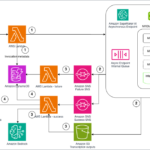U.S. stocks on Friday made small moves, amid expected volatility and uncertainty ahead of a major options expiration event. Still, Wall Street was on track for a three-week win streak.
It is “triple witching” day – when stock options, stock index futures and stock index options will all expire together.
Approaching midday, the benchmark S&P 500 (SP500) was last down 0.11% to 5,467.05 points, while the blue-chip Dow (DJI) was lower by 0.08% to 39,104.69 points. The tech-heavy Nasdaq Composite (COMP:IND) was little changed at 17,723.18 points.
Of the 11 S&P sectors, seven were in the red.
The bull market stalled on Thursday after a bout of profit-taking pulled the S&P (SP500) back from the historic 5,500 points milestones, which it scaled for the first time ever.
Buyer exhaustion has crept into equities, with BTIG cautioning that the hugely popular Invesco QQQ Trust Series 1 (QQQ) was flashing overbought signals and the tech-focused Nasdaq 100 (NDX) was overextended.
“Should we expect more profit-taking, or have we already seen the worst of it? So much depends on investor sentiment, which has remained strongly positive this year. This is despite the U.S. Federal Reserve dialing back rate cut expectations as inflation remains stubbornly high. Yet, there are some signs of a softening in economic data which could persuade the Fed to loosen monetary policy,” David Morrison, senior market analyst at Trade Nation, said.
Economic data on Friday came in mixed, amid an environment where the Fed is looking for further signs of slowdown and a fall in inflation to start easing monetary policy.
But a flash reading from S&P Global showed that U.S. output growth hit 54.6 in June, its highest level since April 2022. The expansion was led by the service sector, where activity has now risen for 17 straight months.
In a separate report, the housing market continued to demonstrate surging prices and declining sales of homes. Existing home sales in May slipped to a seasonally adjusted annual rate of 4.11M, down 2.8% Y/Y. The fall came amid median existing-home sales price jumping to a record high of $419.3K.
“On the latest U.S. data releases: Powered by the jump in the orders component, the just-released metric of services edged higher and pushed the aggregate measure (including manufacturing) to a 26 month high. Meanwhile, U.S. house prices rose again in the context of relatively low activity and limited inventory, again pointing to multiple supply side bottlenecks,” Mohamed El-Erian, chief economic advisor at Allianz, said on X (formerly Twitter).
Additionally, the Conference Board’s leading economic index (LEI) for the U.S. inched down by 0.5% in May to 101.2. The gauge has long been seen as a recession bellwether, however its divergence over the last two years or so from a clearly robust economy has called that status into question.
“While the Index’s six-month growth rate remained firmly negative, the LEI doesn’t currently signal a recession,” the Conference Board’s Justyna Zabinska-La Monica said.
Looking at the fixed-income markets, Treasury yields were largely flat. The longer-end 30-year (US30Y) and 10-year yields (US10Y) were both up 1 basis point each to 4.41% and 4.27%, respectively. The shorter-end, more rate-sensitive 2-year yield (US2Y) was down marginally to 4.75%.
See live data on how Treasury yields are doing across the curve at the Seeking Alpha bond page.
Turning to Friday’s active movers, FactSet Research Systems (FDS) was the top percentage gainer on the S&P 500 (SP500), after the financial data and analytics provider delivered a strong quarterly performance and bumped up its annual profit guidance.











